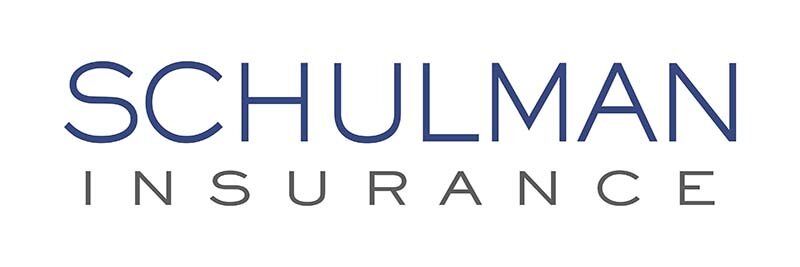Massachusetts Paid Family Leave 2024 Contributions and Benefits and Updates
The Massachusetts Department of Family and Medical Leave (“DFML”) has recently announced changes to the contribution rate, the State Average Weekly Wage, and the maximum weekly benefit amount for the Massachusetts Paid Family and Medical Leave (“PFML”) program effective January 1, 2024. The DFML has also published the FY2023 Annual Report for the PFML program. In addition, recent legislative changes to the PFML program will allow employees to supplement (or “top off”) their weekly PFML benefit amount with accrued paid leave under an employer policy or collective bargaining agreement. The changes take effect for claims filed on or after November 1, 2023.
Contributions
The 2024 contribution rate on eligible wages will be 0.88% (adjusted up from the 2023 rate of 0.63%). Individual contributions are capped by the Social Security income limit. The 2024 Social Security income limit is expected to be released later in October and will likely be significantly higher than the 2023 limit which is currently set at $160,200. If an employer has at least 25 covered individuals (i.e., employees and 1099 contractors in MA), both the employer and the employee share in the cost of medical leave benefits. The employee is responsible for the entire cost of family leave benefits.
The following illustrates the PFML contribution breakdown for 2024: • Medical Leave Contribution: 0.70% of eligible wages allocated as follows; • Employer: At least 60% of the medical leave cost is paid by the employer (0.42%) • Employee: No more than 40% of medical leave can be deducted from the employee’s wages (0.28%). Family Leave Contributions: 0.18% of eligible payroll deduction • May be paid entirely from employee wages (no employer contribution required).
If the employer has fewer than 25 covered individuals in Massachusetts, the employer is not required to contribute toward the medical leave or family portions of the benefit. The employee’s 2024 contribution for medical and family leave benefits is 0.46% of eligible wages.
Amount of Benefit
The weekly benefit amount for employees and self-employed individuals on family or medical leave is determined as follows: • The portion of an employee’s or self-employed individual’s average weekly wage (“AWW”) that is equal to or less than 50 percent of the state average weekly wage (“MAAWW”) is replaced at a rate of 80 percent; and • The portion of an employee’s or self-employed individual’s AWW that is more than 50 percent of the MAAWW is replaced at a rate of 50 percent, up to the maximum allowed benefit amount.
For 2024: • The MAAWW will be $1,796.72, an increase of 1.8% from the 2023 MAAWW of $1,765.34. • The maximum weekly PFML benefit will be $1,149.90, an increase of 1.3% from the maximum weekly benefit of $1,129.82 in 2023.
FY2023 Annual Report
As required by the Family and Medical Leave Law, the DFML has issued its annual report containing information on benefits, applications, and certain characteristics of applicants during Fiscal Year 2023. The annual report can be found at https://www.mass.gov/doc/fy2023-dfml-annual-report/download
Topping Off
Topping off allows employees on PFML to supplement their weekly PFML benefit with their accrued vacation pay, sick pay, or other paid leave, up to the employee’s Individual Average Weekly Wage (“IAWW”). The state provides the following example: An employee’s IAWW = $2,000 and they have an approved PFML application that pays $1,100 per week. The employee may top off that amount with PTO up to $900, if available. As a reminder, under the state program, an employee’s IAWW is calculated by the DFML from the amount an employee earned in the last four completed calendar quarters before the start of the employee’s benefit year. The IAWW is the average amount the employee earned per week in the two quarters when the employee earned the most money (or the one quarter with the most money if the employee only worked in two or fewer quarters).
Employer Responsibilities under the State Program
Prior to these changes, employees were only allowed to top-off benefits under an approved private plan; employees who received PFML benefits through the state program were not allowed to use accrued paid leave during any leave period in which the employee was receiving PFML benefits from the state. Employers will now be responsible for monitoring and ensuring that the combined weekly sum of employer-provided paid leave benefits and PFML benefits does not exceed an employee’s IAWW. Employers do not need to report top off amounts to the DFML. Employers with a registered Leave Administrator can determine an employee’s weekly PFML benefit rate and their IAWW by accessing the employee’s PFML Approval Notice. The DFML stresses that employers who do not have a registered Leave Administrator will not be able to access this information. Employers must have a registered Leave Administrator on file with DFML.
Employer Responsibilities under a Private Plan
Exemption Prior to these changes, employers who administered an approved private plan could allow their employees to top off their PFML benefits with accrued paid leave. Under the new rules, employers with a private plan exemption must allow for top offs.
Employer Action
Employers should prepare for the 2024 PFML contribution and benefit increases by working with payroll processors, approved private plan vendors and employment counsel to ensure their leave policies and procedures are compliant by January 2024. Updated workplace posters and notifications for the 2024 contribution rates and benefit amounts will be available to employers on the PFML website soon. Employers should also review the guidance and resources released by the DFML and should review and update their PFML policies and procedures to comply with these recent changes effective November 1, 2023.
